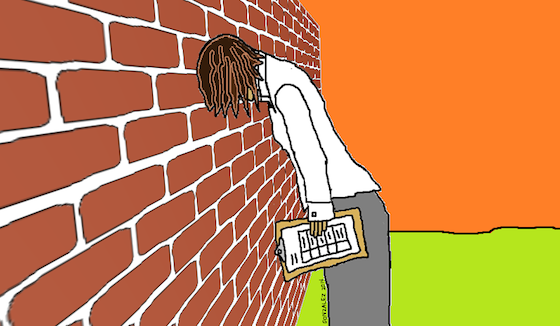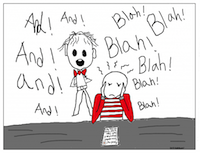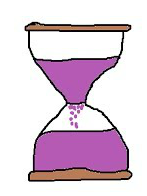From Wiggly to Wise: How Morning Meetings Build Self-Aware Kids
https://casel.org/blog/from-wiggly-to-wise-how-morning-meetings-build-self-aware-kids/
The beginning of my third year of teaching Kindergarten brought me a challenge I’ll never forget—a student who had 47 tantrums in one day. These outbursts, triggered by impatience or not being called on, could last from 2 to 30 minutes. I tried strategies like breathing exercises, calm activities, and breaks in the calming corner. While some worked occasionally, others made the situation worse.
Over time, I leaned heavily into SEL practices—especially morning meetings and feelings check-ins. At first, this student struggled to sit through the meeting but always participated in check-ins. Over the course of about four months, after consistent practice, listening, and modeling, I saw gradual progress. Then one day, during a difficult moment, the student paused and said, “I feel frustrated!”—a breakthrough that reflected months of emotional scaffolding and trust-building.
Since then, tantrums have decreased dramatically, and the student now identifies and expresses emotions regularly. One day, my growing friend even comforted a sad classmate by saying, “It’s okay—you’ll get picked next time!”
Morning Meetings in Action
Every morning, my students gather on the rug for our morning meeting. Here’s how it works:These activities support self-management and prepare us for a day of learning and growth
Feelings Check-In: Each child shares how they’re feeling and why, using a visual chart of emotions. Some days we SHOW how we feel with our body and face, without using our voices.
Expectations Review
Student of the Day Question: The student of the day answers a thought-provoking question while classmates practice active listening—eyes on the speaker, hand signals to connect, and voices off.
Mindful Breathing and Yoga: Using a Hoberman sphere, we practice belly breathing, then the student of the day selects a yoga pose of the day.
These activities support self-management and prepare us for a day of learning and growth.
The Impact in my Classroom
The results of these practices have been extraordinary. From September to December, our class grew from 64% to 86% at or above grade level in Math, and from 63% to 73% in Reading. That’s a remarkable amount of growth in just four months—and I believe our daily SEL routines played a key role. When students are emotionally regulated and connected to their learning environment, they’re more able to focus, take risks, and engage.
While one student made a breakthrough by naming their emotions instead of acting out, others made equally significant strides. A student with autism spectrum disorder (ASD), who couldn’t sit still or attend to a group meeting at the start of the year, gradually learned to participate fully. The consistency of our routine created a sense of safety and predictability that allowed them to thrive.Another shared they felt “frustrated that their brother wasn’t being nice in the car but happy because Mom let them listen to their favorite song.” Moments like these show how deeply these routines resonate.
In fact, many students today struggle with sitting still, listening to others, and showing attention—especially post-COVID. But after months of practicing mindful listening during feelings check-ins, our class became known for their ability to sit attentively and respectfully. During assemblies and classroom visits, our principal and other teachers frequently commented that my students were the most capable listeners they’d seen.
My classroom has transformed from a group of wiggly five-year-olds rolling on the rug to a community that listens, respects boundaries, and resolves conflicts. These aren’t
just academic skills—they’re life skills.
Research That Backs it Up
Morning meetings aren’t just feel-good routines—they’re grounded in research. CASEL’s framework emphasizes the importance of the five core SEL competencies in fostering academic and social success.
Durlak et al. (2015) found that effective SEL programs improve social behaviors, reduce emotional distress, and increase academic achievement. Morning meetings, with their focus on emotional regulation and connection, create the structure needed for these outcomes.
Schlund, Jagers, and Schlinger (2020) highlight SEL as a lever for equity. By teaching emotional regulation and active listening, morning meetings provide tools that benefit all students, particularly those who face challenges in social or emotional development.
Start Your Morning Meetings Today
Morning meetings are adaptable to any grade level. Even a simple daily feelings check-in can make a big difference. Build on it with mindfulness practices, affirmations, or a student spotlight, and watch your classroom transform.
SEL isn’t just a subject; it’s the foundation for lifelong success. Let’s start the day right—one morning meeting at a time.
About the Author
Katie Jo Olsen, M.A. SEL, B.Ed., is a kindergarten teacher and advocate for equity-driven, trauma-informed SEL. She creates emotionally responsive classrooms that help young learners grow in self-awareness and empathy. Her work blends research, routine, and heart.


 lternative: Whenever possible, address off-task behavior in private. Some teachers silently place a post-it note on the student’s desk to signal that a problem has occurred, then add a check mark for every subsequent infraction.
lternative: Whenever possible, address off-task behavior in private. Some teachers silently place a post-it note on the student’s desk to signal that a problem has occurred, then add a check mark for every subsequent infraction. When you distribute a handout to students, do you give them quiet time to actually read it? Or do you keep talking, “going over it” and constantly interrupting them to the point where they can’t process any of it? When you do this, you guarantee that students will either skip over something important on the document, or miss a vital bit of information you gave verbally. The brain can’t do both at once.
When you distribute a handout to students, do you give them quiet time to actually read it? Or do you keep talking, “going over it” and constantly interrupting them to the point where they can’t process any of it? When you do this, you guarantee that students will either skip over something important on the document, or miss a vital bit of information you gave verbally. The brain can’t do both at once. When a student gets off-task, an ineffective teacher will waste five minutes lecturing her about it. This not only makes you lose valuable instructional time, it also annoys the heck out of the other students, who are forced to sit and watch.
When a student gets off-task, an ineffective teacher will waste five minutes lecturing her about it. This not only makes you lose valuable instructional time, it also annoys the heck out of the other students, who are forced to sit and watch. It’s natural to give your energy to misbehaviors, to only comment when something goes wrong, but you’ll get more cooperation if you give equal (or more) attention to the good behaviors, especially when it comes to students who have trouble with self-control.
It’s natural to give your energy to misbehaviors, to only comment when something goes wrong, but you’ll get more cooperation if you give equal (or more) attention to the good behaviors, especially when it comes to students who have trouble with self-control.

